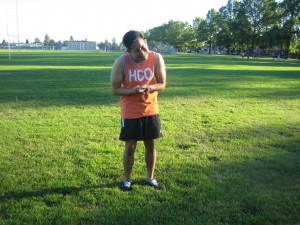Red wasp is also called paper wasp and makes their nest under the attic of the house and other structures such as plants and leaves. Wasp stings triggers severe allergic reactions that range from localized pain and swelling to severe symptoms such as excessive swelling, hives, dizziness, vomiting and nausea. In most cases, these reactions can only be seen among people who are hypersensitive to stings of insects.
Wasps tend to attack when they perceive a threat to their colony. This usually occurs when a person comes close to the nest. Loud noises, bright and dark colors and smell of perfumes can also attract these insects. Female wasps are the ones that sting and capable of stinging a person many times which causes a traumatic experience for the affected person. The stinger is left on the skin of the person and should be withdrawn from the skin of the affected person. Always bear in mind that the sting of the red wasp causes swelling that is painful, inflamed and itchy.
Common red wasp sting symptoms

- A severe pain can be felt at the area of the sting
- Allergic reactions such as rash and hives will develop all over the body, and there is wheezing, gasping for breath and anaphylactic shock.
- Swelling and inflammation where the swelling increases in size
Treatment and home remedies of red wasp sting
- Remove the stinger by using a butter knife and scrape it over the sting or utilize tweezers to remove the stinger, but avoid not to break or placing pressure on the sac of the venom which is found at the end of the stinger since it can accidentally spread to the skin.
- Place ice cubes in a washcloth and place them in a plastic bag and apply it on the affected area for at least 10 to 15 minutes and then dry the skin completely. If there is problem with circulation of blood, reduce the duration of the application of the ice pack.
- Apply a prescribed topical antihistamine on the affected area which is either in stick, gel or in a cream form. If there is pain, you can use a topical anesthetic cream.
- Mix 3 teaspoons of baking soda with 1 teaspoon water. Combine together to create a paste and apply it on the affected area at regular intervals on a daily basis to manage the condition.
- Apply a slice of onion on the affected area at least 5-10 minutes to help minimize the inflammation and pain.
Tips and prevention of red wasp sting
- Avoid waving the wasp away since violent movements can cause the wasp to become aggressive, thus there is a high risk of being stung.
- If coming across a wasp nest, avoid blowing at them since they will attack immediately.
- Stay away from flowers, bushes, trees and piles of wood since these are their ideal dwelling places.
